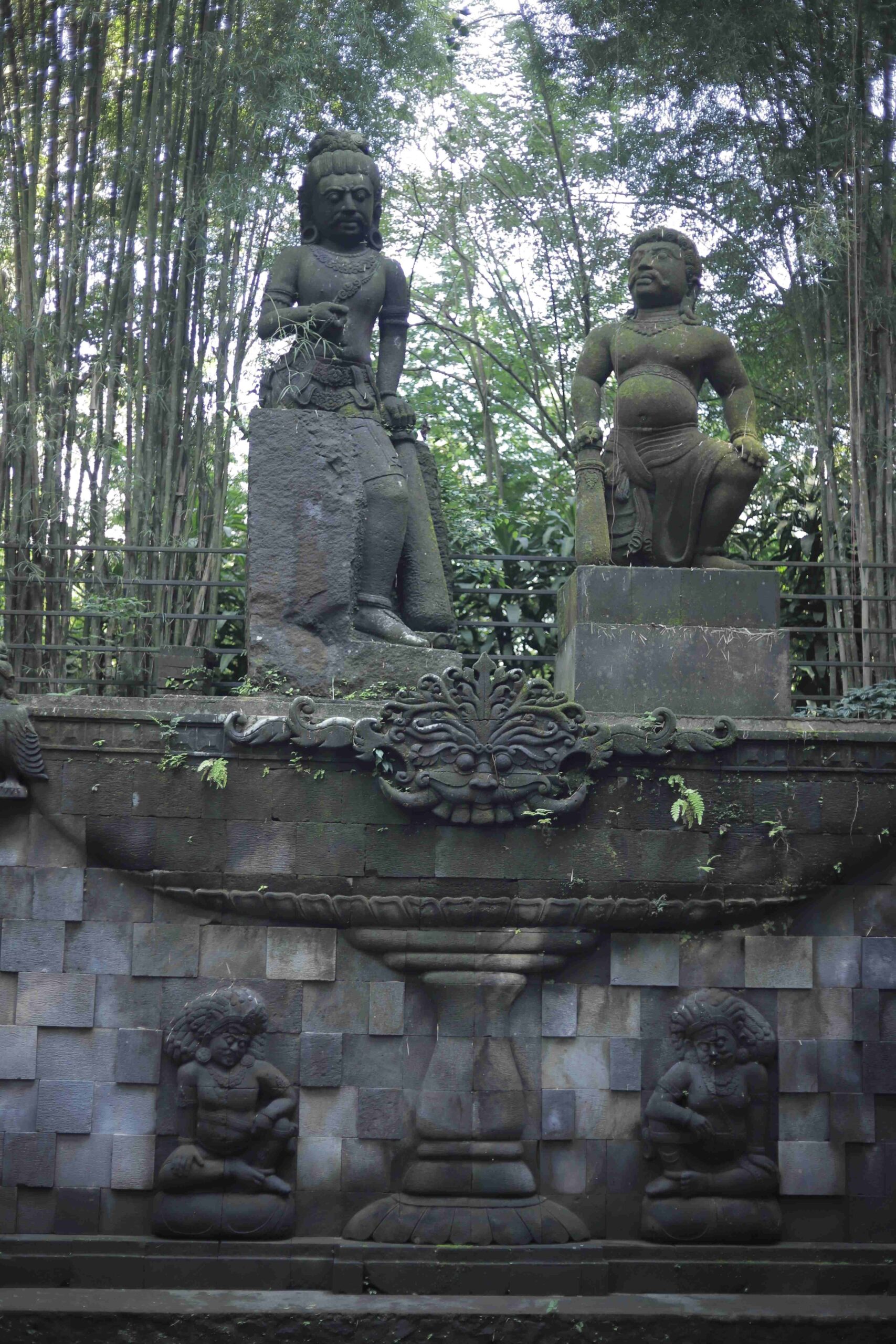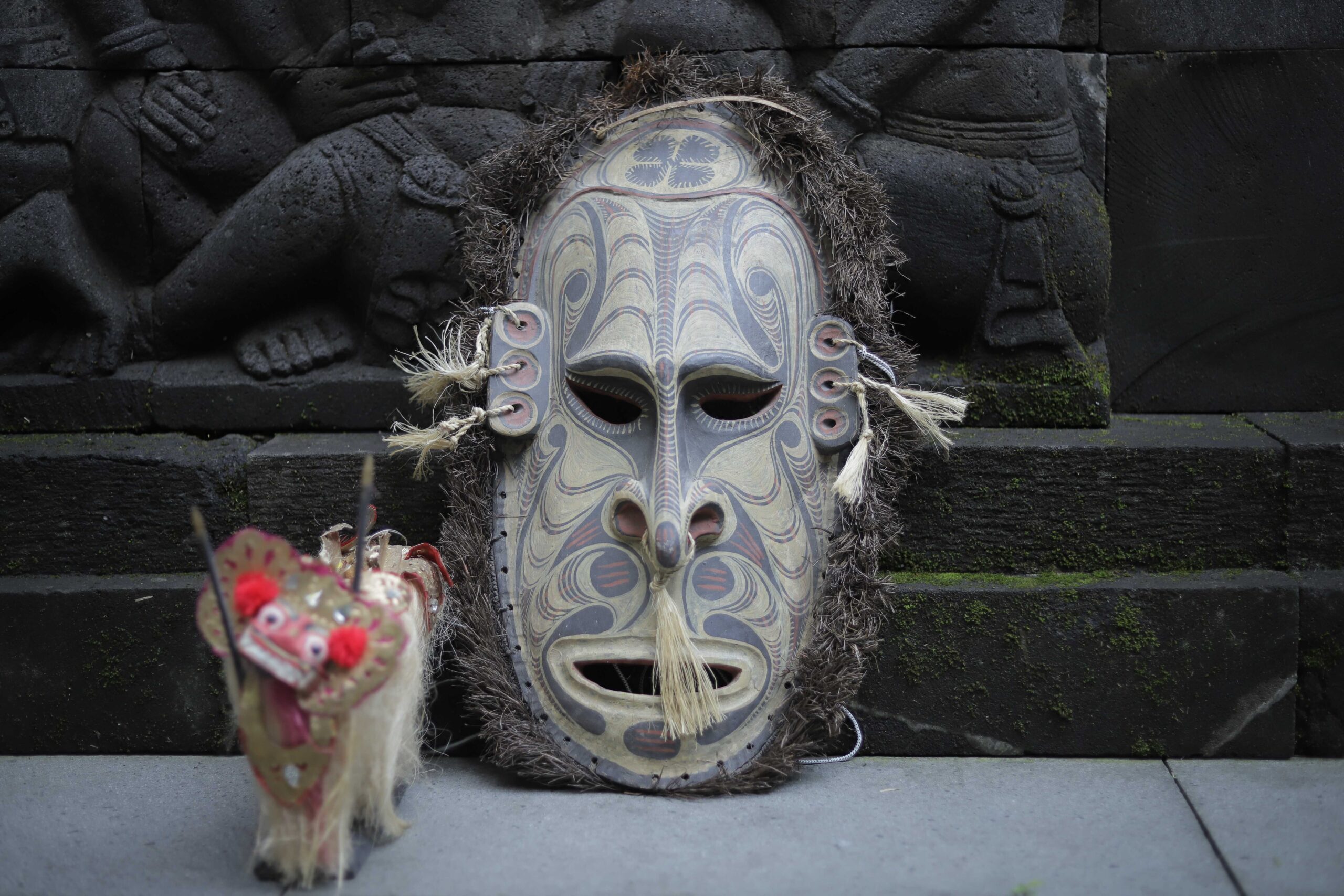
Indonesia has a rich variety of wayang (puppetry), such as wayang kulit (leather puppets), wayang golek (wooden puppets), and wayang beber (paper puppetry). Wayang beber is a pictorial performance painted on cloth or daluang, typically measuring 4m x 70cm, divided into four scenes (jagong). The dalang (puppeteer) narrates the story by unfolding each jagong in sequence.
Among Indonesia’s many traditional wayang forms, wayang beber stands out as a rare and ancient scroll-based performance art that combines painting, storytelling, and ritual. Once flourishing during the Majapahit and Mataram era in Kartasura periods, only a few original scrolls survive today. In this article, we dive into the fascinating history, cultural significance, and the enduring beauty of wayang beber, tracing its journey from sacred temples to scrolls made of daluang, a traditional bark paper- uncovering what remains and what might still be revived.


Indonesia boasts a rich diversity of wayang traditions—ranging from the iconic wayang kulit (shadow puppets) and wayang golek (wooden puppets) to the rare and ancient wayang beber. Wayang beber is a visual storytelling performance using scrolls made of cloth or daluang, each about 4 meters long and 70 cm wide. The scroll is divided into four illustrated scenes (jagong), which are gradually unfolded and narrated by a dalang (puppeteer).
Leiden-based scholar Victoria M. Clara highlighted the distinctive traits of wayang beber, while arts expert Primadi Tabrani traced its roots back to Indonesia’s prehistoric era. This tradition flourished during the Majapahit and Mataram Kartasura periods, but has since suffered significant decline, placing it at risk of fading away.
Today, just three original wayang beber scrolls are known to survive: Wayang Beber Joko Kembang Kuning in Gedompol Village, Pacitan; Wayang Beber Remeng Mangunjaya in Gelaran Village, Gunung Kidul; An unidentified set preserved at the Museum Volkenkunde in Leiden, the Netherlands.
According to historian J.L.A. Brandes, wayang is one of the Ten Key Elements of Nusantara’s indigenous culture. While epics like the Ramayana and Mahabharata from India are commonly performed, Indonesia has its own heroic cycle: the Panji tales of East Java. These native stories, etched on temple reliefs and Mount Penanggungan, are central to wayang beber—the tradition we explore today.
There are several Majapahit temples in East Java adorned with reliefs depicting the Panji Story. When Dr. Lydia Kieven, a German scholar specializing in ancient Javanese art and the Panji tradition. climbed up Mount Penanggungan and visited Candi Kendalisodo in 1996, it was her first time to see the Panji relief and it was mindblowing. For years she travelled across East Java researching temples that depict a figure with a hat.
Candi Kendalisono at the slope of Mount Penanggungan was built around 1450 CE, and it was a special place consisting of a terraced building for worship to the gods and the ancestors, and a meditation cave covered by a wall. Both buildings were adorned with reliefs of worship – we can see a long panel with beautiful and captivating depiction of a man and a woman walking in nature and they sat together intimately, the man was playing fiena, a musical instrument similar to a rebab with two resonators. The man was wearing a Tekes hat. The depiction of nature with the mountain, the trees, the lake and water fountain, the walkway, is very beautiful. As if we can picture ourselves coming along their walk to the mountain.
At the last panel, the couple was standing by the sea, ready to cross it. The story is not exactly known, but from the Tekes hat worn by the man, the iconography, and the carving style of the natural elements, it is possible that these panels depict the Panji Story. On the wall of the meditation cave, we find scenes of Arjuna Wiwaha and Bima Suci on the reliefs. The main takeaway of the stories is meditation and entering the sea to gain infinite knowledge.
The figure of Panji in wayang batu (stone relief) transformed into Wayang Beber made out of high quality mulberry tree bark called daluang. Not many in Indonesia are continuing the tradition in making daluang, but one of them is a craftsman from Bandung.






Due to the decline in traditional daluang papermaking, mulberry trees– its primary source, are now scarce. Fortunately, Mufid Sururi from Bandung, a dedicated ancient paper conservationist, has successfully cultivated these trees and preserved the traditional daluang-making process.
Unlike modern pulp-based paper that contains chemical additives, daluang is made purely with water, staying true to its natural roots.
Many great civilizations take pride in their traditional papers, Egypt with papyrus, Japan with washi, Papua New Guinea with tapa, South Korea with hanji, and others.
Mulberry tree, or Broussonetia papyrifera, or also known in Sundanese as saeh tree, bears fruits that you can enjoy, and the tree bark can be made into paper known as paper mulberry. Traditionally we known them as daluang or dluwang. The white-coloured inner tree bark are peeled and soaked for 24 hours. Afterwards, it is pounded hundred times over using tools of various sizes and surfaces.
This strong and beautifully textured organic paper is a material of Indonesian heritage for painting Wayang Beber, replacing cloth and stone carving from temples in East Java.
With natural dye, like red from suruh (betel leaves), black from coal, white from burnt bones, and other organic eco-friendly material, it is not surprising that after hundreds of years, the colours and the paintings are still vividly beautiful.
Only three ancient Wayang Beber scrolls made from daluang remain in the world today. The first is Wayang Beber Desa Gedompol from Pacitan, East Java, preserved by the Tri Hartanto family. The second is from Gelaran Village in Gunung Kidul, Yogyakarta, just an hour’s drive from Pacitan, and is cared for by the Wisnu Utomo family. The third is housed far from home, at the Museum Volkenkunde in Leiden, the Netherlands.
Through this edition of Buka Kotak — Wayang Beber: This is Your Life — we trace the stories behind these surviving scrolls, explore their enduring beauty, uncover what makes each of them unique, and reflect on how they can continue to inspire and evolve in the present day.









